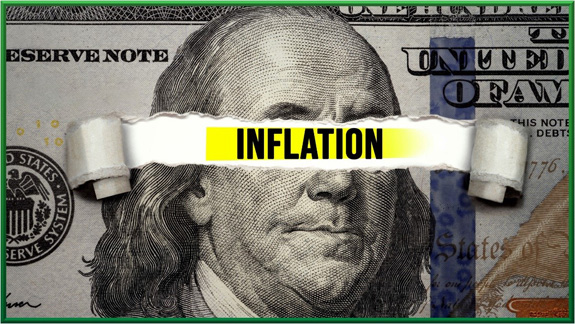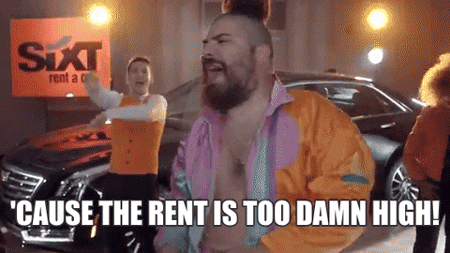Here's To A Healthier, Wealthier New Year! As we celebrate the arrival of 2022, let’s take a look back at some of the best and worst that 2021 had to offer.
For crypto holders, 2021 was an absolute blessing. For anyone who chose NOT to jump on board the crypto train…well, there’s no time like the present.
Traditional investments, on the other hand, faced some major challenges last year. In an economy already plagued by inflation, anyone stuck holding THESE seven loser stocks is probably ready for a change…and fortunately, the Green Zone Ratings System is just the tool to make that change.

I’m going to warn you right now…what you’re about to hear may make you sick.
Maybe not coronavirus-level sick, but what I’m going to tell you does have the potential to make you physically ill.
Why?
Well, whenever I find out that my hesitancy and fear cost me a LOT of money, I tend to have a physical reaction. I don’t necessarily hurl my guts out, but I want to…and that’s enough.
So, I wanted to sufficiently warn you that what you’re about to hear has the potential to elicit that same reaction if you’re prone to it.
Now that the warning is out of the way, let’s get down to it, shall we?
Are you ready to learn just how much money we left on the table by NOT getting in on cryptos in 2021?
We’re going to work from the smallest gain to the biggest gain…
And again, I urge you, fight the desire to puke. Get Your Barf Bag Ready First, let’s start with Ethereum (ETH).
Ethereum is the world’s second-biggest cryptocurrency (not in value, just in scope) behind Bitcoin, and it had a VERY good 2021. The emergence of the Non-Fungible Token (NFT) market, which trades almost exclusively in ETH, gave it a huge boost.
The value of a single Ether (one Ethereum token) is up more than 400% over the past year.
That means that a $1,000 investment on January 1st, 2021, when Ethereum was $730.30, would now be worth a whopping $5,226.16 as of this writing on December 30th.
Not bad for a 12-month investment, right?
Of course not.
But if that made you a little nauseous…prepare yourself, because t gets worse.
Another coin that had a very… interesting year, to say the least, would be Dogecoin (DOGE), one of the favorites of Tesla CEO Elon Musk.
If you would have invested $1,000 into Dogecoin at the start of the year when the price was $0.0056, you’d now be sitting on a little crypto-egg of a whopping $32,142, as the coin is hovering around $0.18 per coin.
That’s all pretty crazy when you keep in mind that Dogecoin started out as a joke inspired by a meme from over seven years ago.  What’s even worse is that while this gain is huge, it was even bigger earlier this year when Doge was up 12,000% at one point.
You puke yet?
Or are you still with me?
If so, this is the last one we’re going to talk about, but it’s important that we do. If This Doesn’t Make Your Retch, Nothing Will The last coin to discuss is Solana (SOL).
If you had invested $1,000 in Solana at the beginning of 2021, when one coin cost $1.53, that $1K would now be worth a knee-bending $118,418 at Tuesday’s price of $181.18 per coin.
2021 was a HUGE year for the smart contract coin, which grew by more than 13,800% and is currently the No. 5 biggest crypto with a market cap of over $57 billion.
All of this in ONE year!
Now, if you really want to get sick, do the math with a $10,000 investment.
Can you see why I’m pushing so hard for us to get familiar with cryptos?
These things have the potential to create INCREDIBLE amounts of wealth…
But we’ve got to be there to grab it!
Look for our first investment on January 3rd! I’ll have it posted at www.moneyandmarkets.com/category/money-moves/ so you can start tracking it as well.
Let’s see if we learned anything over the last few months…
Thanks for sticking with me!
Click HERE To Catch Up On The Crypto Journey So Far!

Want some brutal honesty?
Most likely not…but I’m going to give it to you anyway.
There really isn’t that big of a difference between investing on Wall Street and gambling in Las Vegas.
That’s a very unpopular opinion, and there are probably a lot of people that would love to waterboard me just for saying it…but that doesn’t change the fact that the statement is true.
Investing IS a gamble. You’re betting that the stock you’ve chosen to invest in will gain value over time. You’re hoping the information you have on a given company is correct and will bear fruit in the future.
How is this different than betting on whether a roulette ball is going to land on red or black? While you have more information when it comes to stocks, that information could be true, false, or entirely contingent on other things happening.
So, while it’s an unpopular opinion to say that investing is similar to gambling…it’s definitely a true statement. Big Losers: Who Got Suckered In? The reason I’m bringing this up is that sometimes even the veritable “sure thing” turns out to be a dud…and just like with gambling, it can cost people everything.
2021 put forth a lot of potential rockets that turned out to be duds - and there were a handful of stocks on the S&P that wound up costing investors a whopping $200 billion.
Yes, you heard that correctly…
Just seven loser stocks cost investors a staggering $200 billion in losses this year. That’s enough to make you want to punch a puppy.  Well, maybe not literally, but you know what I'm saying.
Going down the list, these stocks are: - Global Payments (GPN) lost 37.3%
- Activision Blizzard (ATVI) lost 28.2%
- Fidelity National Information Services (FIS) lost 22.7%
- PayPal Holdings (PYPL) lost 18.8%
- Walt Disney (DIS) lost 14.3%
- AT&T (T) lost 13.7%
- Verizon Communications (VZ) lost 10.3%
That’s a major loss for gigantic companies that usually have a lot going for them.
On the Green Zone Fortunes rating system, these seven stocks average only a 29, putting them in “bearish” territory.
The highest score overall went to Activision Blizzard (ATVI), which actually came in with a “neutral” score of 46–but that still ain’t good. (See the company’s full GZF work up HERE.)
Had investors who took a chance on these stocks been a member of Green Zone Fortunes, they’d have been able to get the scores of these companies and compare them with the information they had before hitting that “buy” button. The Most Powerful (And FREE) Investment Tool On The Internet It’s just a best practice, right?
If you have access to a resource like the Green Zone Fortunes rating system and you’re not using it, you’re doing yourself a HUGE disservice.
The GZF rating system is completely FREE (for now… this may not always be the case) and it’s as easy as plugging in the ticker symbol.
That’s it…
Put in the ticker or the company name, and you’ll get the GZF rating on that stock. If it’s bullish, you may want to consider grabbing some shares. If it’s bearish, you might want to hold off.
I truly believe that the GZF rating system is one of the most powerful tools on the internet when it comes to determining whether to buy or sell a stock.
I mean, think about it: the GZF rating system has beaten the market by OVER 15,000%. That’s how powerful this thing is.
This is what makes the ACTUAL Green Zone Fortunes service such a successful service. Adam O’Dell and Charles Sizemore have this powerful tool from which to pull data to make their recommendations…and that only benefits you!
If you want more details on just how Green Zone Fortunes work, you can watch this short video by Adam as he explains how he can help you reach your investment goals. Watch it HERE.
Regardless of whether you join the GZF family or not, the rating system is yours to use.
And you should make it a part of your daily routine when it comes to buying and selling stocks.
Give it a week and you’ll see just how powerful and useful a tool it is.
Or, you can continue gambling away like those that lost $200 billion collectively.
The choice is yours…

2021: The Year Inflation Returned With A Vengeance
by Ryan James Hey, did you guys notice prices went up this past year…on, like, everything?
Yeah, I know, that’s the stellar economic advice that I am paid to provide you, our loyal readers. You’re welcome!
The inflation of 2021 was like nothing we’ve seen since the early years of the Reagan administration.  And the Gipper wouldn’t be happy with Goldman Sachs' latest note in which they predict that headline CPI will reach as high as 7% in the next few months.
The CPI rose 6.8% from a year ago, the fastest rate in nearly 40 years.
Core CPI—which excludes food and energy prices— rose 4.9% from a year ago, which is the largest increase since 1991.
Energy prices have risen 33.3% since November 2020 and increased 3.5% in November.
If you have been to a grocery store lately, you have undoubtedly noticed that prices have soared on goods ranging from meat to butter.
Grocery prices are up 6.4% from a year ago.
According to the Labor Department, meat prices are up 16% from a year ago. Beef prices are up 20.9%, pork prices have risen 16.8%, and bacon 21%. Chicken has risen 9.2%, and hamburger meat is up 13.9%.
And if you have been to a gas station anytime in the last year, it will come as no surprise to you that gas prices have climbed 58.1% in the past year.
Food prices at restaurants are also up 6.1% for the year.
“Prices for used cars and trucks have been among the biggest drivers of inflation in 2021, with costs soaring 31% over the last year. New vehicles have seen a smaller gain of 11%,” according to Business Insider.
According to the labor department, food and energy costs grew at the fastest one-year pace in 13 years, and shelter costs increased 3.8%, the highest rate since the housing crisis of 2007.
That’s right… the rent is too damn high!  The Federal Reserve has been proven wrong as well. The Fed previously claimed that inflation wouldn’t be severe and that it would be “transitory.”
Last month, speaking in front of Congress, Fed Chairman Jerome Powell finally admitted that inflation was indeed not transitory, and said that it was time to retire the word when describing current and future inflation.
Powell also added, “at this point, the economy is very strong, and inflationary pressures are high, and it is, therefore, appropriate in my view to consider wrapping up the taper of our asset purchases, which we actually announced at our November meeting, perhaps a few months sooner.”
According to the Wall Street Journal, “Sixty percent of small-business owners said they had increased prices in the previous 90 days, according to a November survey of more than 560 small businesses for The Wall Street Journal by Vistage Worldwide Inc., a business-coaching and peer-advisory firm. Eighty percent of the companies surveyed reported increased labor costs, while 72% said their suppliers had raised prices.
So, welcome back, inflation. It’s been a while…but not long enough. Come 2022, feel free to leave again. Don’t let the door hit you on the butt on the way out!
For more quality content like this, and to learn more about the Money Moves team, visit us at https://moneyandmarkets.com/category/money-moves/ |
Tidak ada komentar:
Posting Komentar